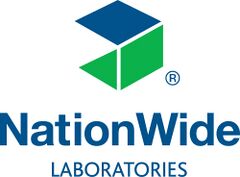Examination of aborted ovine foetuses
Introdcution
This outlines the procedure that can be used for the post mortem examination and subsequent laboratory examination of tissues retrieved from aborted ovine foetuses.
Safety
Ovine foetuses may be infected with several potentially serious zoonotic organisms: Chlamydia psittaci (EAE), Coxiella burnetii (Q-fever), Listeria, Campylobacter, Salmonella and Toxoplasma. Wherever possible post mortem examinations should be carried out in a safety cabinet, but if the foetus is too large or there is no safety cabinet available, a disposable dust mask should be used and appropriate safety precautions taken. Gloves and disposable aprons and sleeve guards should be worn. Any person who is or suspects they may be pregnant must not handle aborted ovine material.
Procedure
Post mortem
- Weigh the foetus and note the appearance, for example fresh, autolysed, mummified, swollen joints etc
- After opening the body cavities take an aliquot of thoracic or peritoneal fluid with a syringe for toxoplasma serology
- Record whether the lungs are expanded or unexpanded. This can be determined by placing a section of lung in water – expanded lung will float and unexpanded will sink
- If sufficient stomach contents are present collect material in a sterile plain vacutainer. If minimal stomach contents , soak two plain swabs with material. Make air dried smears of stomach contents and if possible heat fix
- Collect a portion of liver; note any abnormalities such as white spots ‘sawdust liver’ indicative of Listeriosis
- Check the foetus for any obvious congenital abnormalities
- Examine the placenta if available and remove up to 3 cotyledons, prepare air dried impression smears for microscopy by cutting each cotyledon in half and touching onto a slide several times. Heat fix if possible
- Check for obvious abnormalities such as white foci in the cotyledons or yellow necrotic cotyledons
- Dispose of all material appropriately as clinical waste
Schmallenberg virus PCR
Remove 1cm3 sample of brain (cerebral cortex) as aseptically as possible. Place ‘fresh’ sample in an appropriate sterile container. If brain is not available, use umbilicus. A secondary sample shown be removed and frozen until results are received. Submit all samples labelled to the laboratory.
Please visit www.nwlabs.co.uk or see our current price list for more information
Laboratory examination
- Toxoplasma serology
- Liver culture
- Culture of stomach contents including CampylobacterSmears stained using modified ZN and examined for Chlamydial (EAE) or Rickettsial inclusion bodies (Q fever). Campylobacter may also be seen
Significant isolates from ovine foetuses are
- Salmonellae
- Campylobacter
- Listeria
- Pure growths such as ß-Streptococci, Staphylococcus aureus
Please visit www.nwlabs.co.uk or see our current price list for more information
